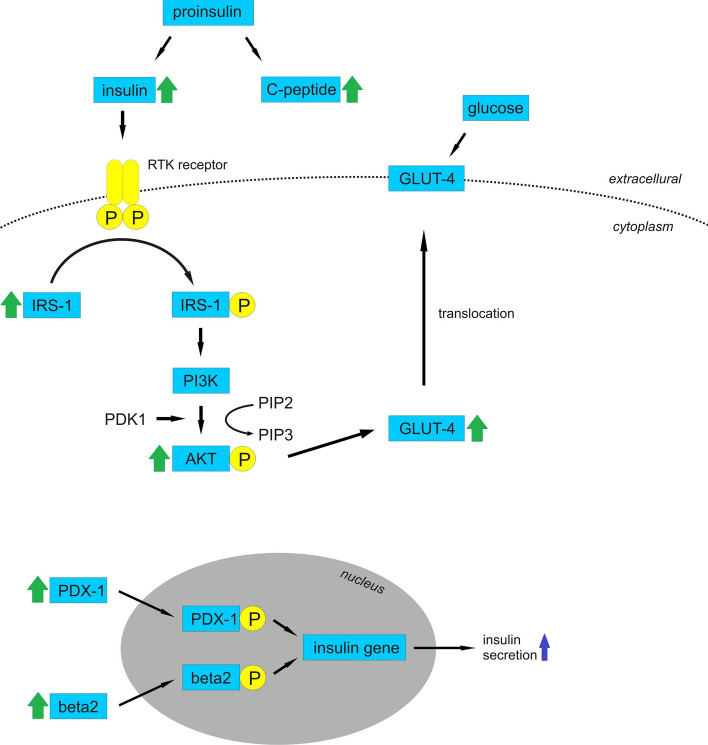Fig. 3.
Mechanism of antidiabetic activity of mistletoe. Mistletoe increases the secretion of insulin and insulin precursor, C-peptide. Insulin binds to tyrosine kinase receptor (RTK). The activated receptor phosphorylates the IRS-1 protein leading to activation of PI3K which catalyzes the addition of phosphate group to PIP2, converting it to PIP3. PIP3 activates PDK1 leading to AKT phosphorylation, recruitment of the glucose transporter GLUT-4 to the membrane and glucose inflow. Mistletoe enhances the expression of GLUT-4, IRS-1 and AKT. Furthermore, protein fraction of mistletoe upregulates transcription factors PDX-1 and beta2 (neuroD). PDX-1 and beta2 become phosphorylated (this process might be mediated by PI3K and ERK1/2 pathways) and regulate insulin gene transcription

